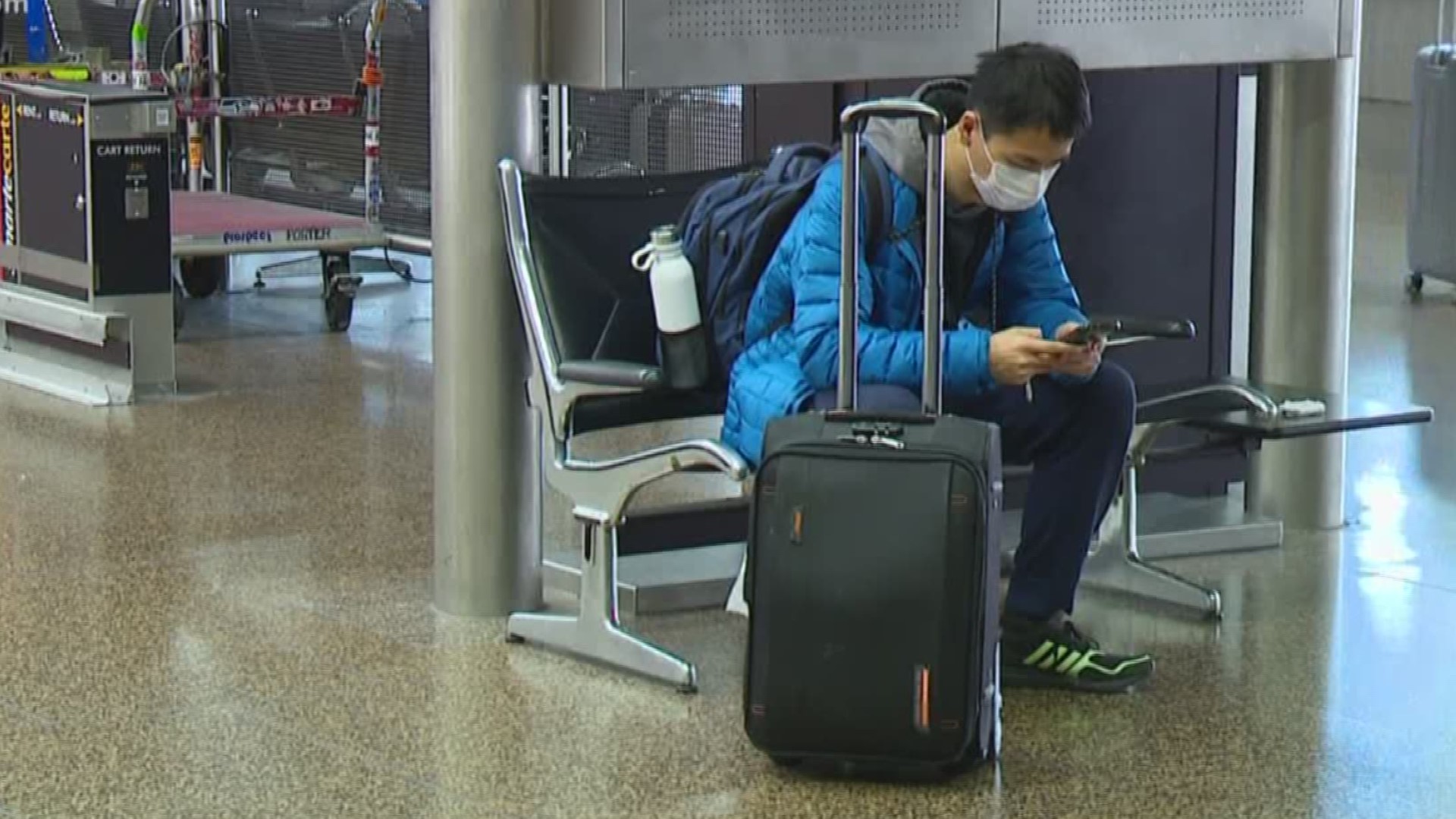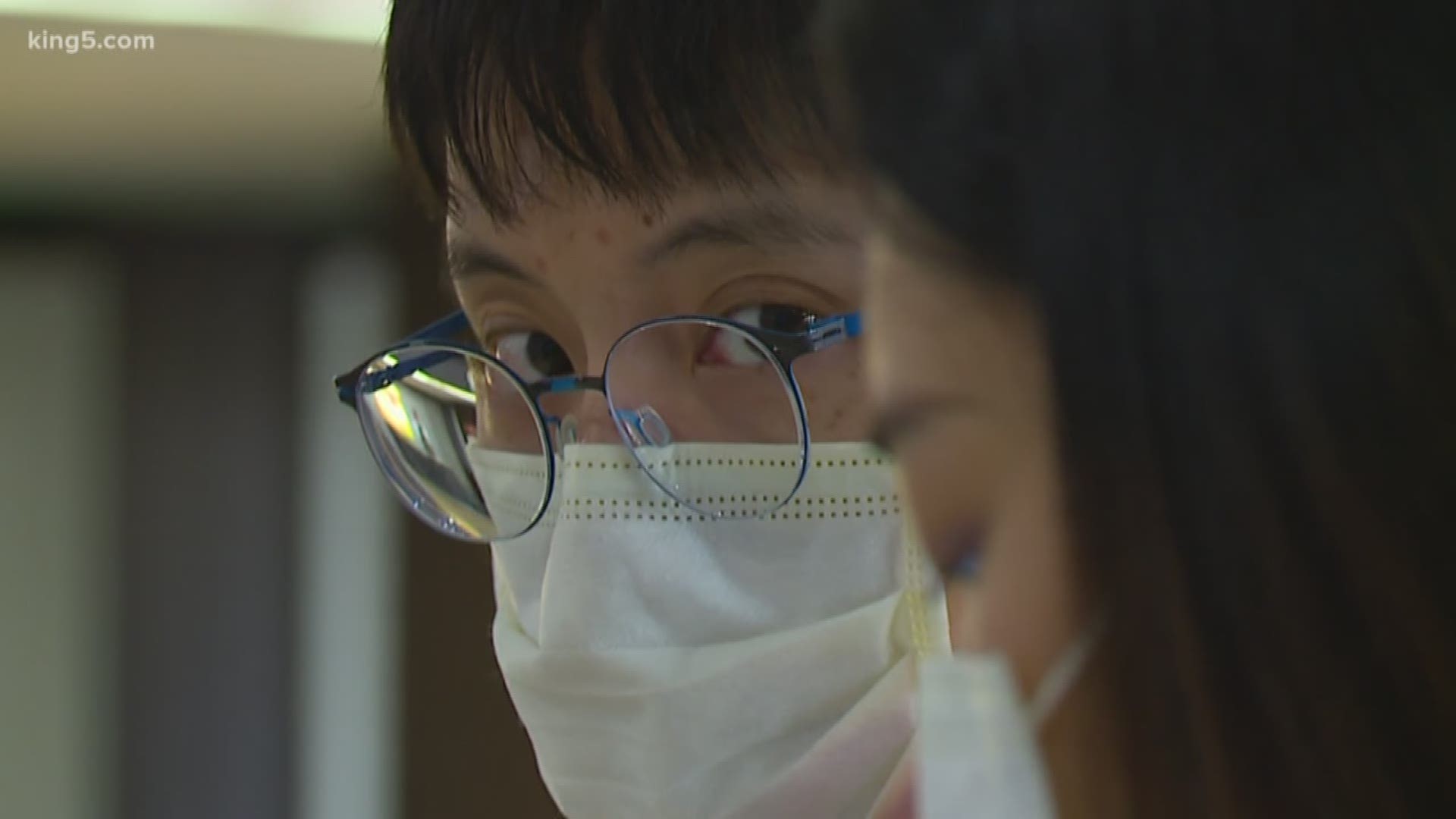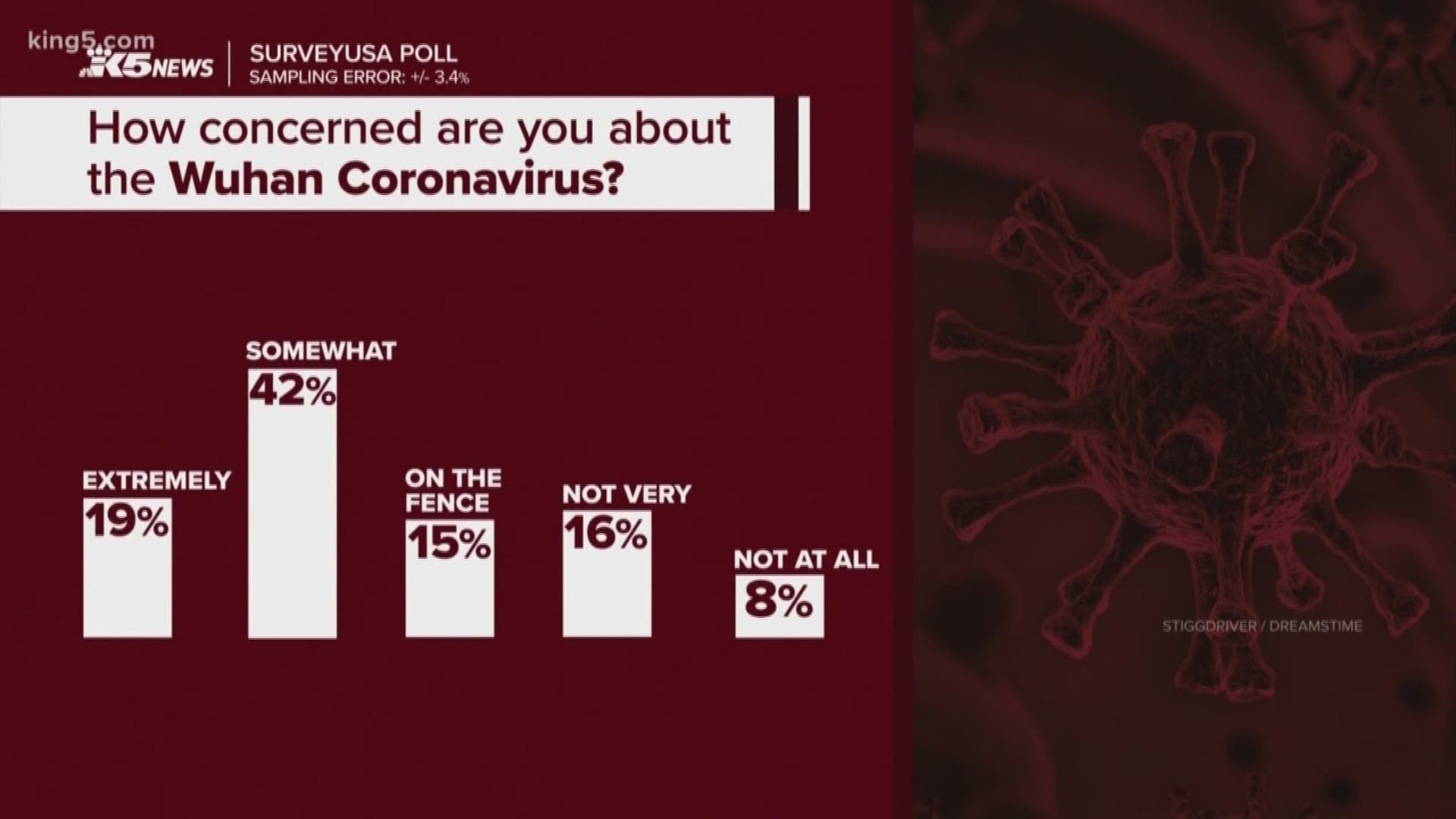On Friday, the United States declared a public health emergency and announced significant entry restrictions due to a new virus that hit China and has spread to other nations.
Health and Human Services Secretary Alex Azar, who is coordinating the federal response, announced that President Donald Trump signed an order that will temporarily bar entry to the U.S. of foreign nationals, other than the immediate family of U.S. citizens and permanent residents, who have traveled in China within the last 14 days.
Over the weekend, the U.S. began funneling all flights to the U.S. from China into major airports where passengers can be screened for the illness. One of those airports includes the Seattle-Tacoma International Airport.
As of Monday, the other U.S. screening airports are John F. Kennedy International in New York, Los Angeles International in California, San Francisco International in California, O'Hare International in Chicago, Hartsfield-Jackson Atlanta International in Georgia, and Daniel K. Inouye International in Hawaii, Washington-Dulles International Airport in Virginia, Newark Liberty International Airport in New Jersey, Dallas/Fort Worth International Airport in Texas, and Detroit Metropolitan Airport in MIchigan.
Jianglong Li lives in Washington state, but he is originally from China. On Sunday afternoon, he was wearing a mask as a precaution in Sea-Tac Airport as he waited to pick up his wife who spent three weeks visiting family in Shanghai.
“In the beginning, it wasn’t too much of a big deal," Li said. "But now as the number is increasing, the number of people who have been infected and stuff... I feel worried."
Li said his wife will probably self-quarantine for a few days, and he will do the same. “I think we need to take some precautions, you know,” Li said.
"It is likely that we will continue to see more cases in the United States in the coming days and weeks, including some limited person-to-person transmissions,” Azar said. “The American public can be assured the full weight of the U.S. government is working to safeguard the health and safety of the American people.”
The virus has infected at least 17,205 people globally in just two months, a troublesome sign that prompted the World Health Organization to declare the outbreak a global emergency. At least 361 people have died from the virus in China.
A public health emergency in the U.S. allows the government to tap additional resources to send to states, such as emergency funding and if necessary drugs or equipment from the national stockpile, and to suspend certain legal requirements.
Robert Redfield, director of the Centers for Disease Control and Prevention, said that while the risk in the U.S. is low, “I want to emphasize that this is a significant global situation and it continues to evolve."
As of Monday, there are at least 11 confirmed cases of the virus in the U.S., including one case in Washington state.
Dr. Anthony Fauci, infectious diseases chief at the National Institutes of Health, said one reason the U.S. stepped up its quarantine measures was an alarming report from Germany that a traveler from China had spread the virus despite showing no symptoms. Fauci contrasted it with the response to recent outbreaks of Ebola, which can’t be spread unless someone is very ill.
At the same time, federal health authorities were recognizing that the test they’re using to detect the virus isn’t always dependable. Redfield said when it was used on some of the people currently in isolation, they’d test positive one day and negative another.
Of the 11 U.S. patients so far, airport screening detected only one. “Astute doctors” caught four others, after the people sought care and revealed that they’d traveled to China, Redfield said. And the CDC diagnosed the most recent case, the spouse of one of those earlier cases, who was being closely monitored.
Lawrence Gostin, a Georgetown University expert on public health law, said putting a large number of people under quarantine “is virtually unprecedented in modern American history.”
“But I think it’s justified,” he said, noting the evacuees had been in a hot zone for the virus for a long time.
Deputy Secretary of State Steve Biegun offered America’s “deepest compassion” to the Chinese, noting that the deadly outbreak came during the peak of their holiday season, when everyone would ordinarily be celebrating and not living in fear of contracting the virus.
Biegun said the U.S. is working hard to find donors of supplies and making arrangements for a “robust effort to help the Chinese people get their arms around this outbreak.”
The announcement came hours after the State Department issued a level 4 “Do Not Travel" advisory, the highest grade of warning, and told Americans in China to consider departing using commercial means. "Travelers should be prepared for travel restrictions to be put into effect with little or no advance notice," the advisory said.
Hours later, Delta Air Lines and American Airlines announced they were suspending all flights between the U.S. and China, joining several international carriers that have stopped flying to China as the virus outbreak continues to spread.
Meanwhile, U.S. health officials issued a two-week quarantine order for the 195 Americans evacuated earlier this week from the Chinese city of Wuhan, the provincial capital of Hubei province. It was the first time a federal quarantine has been ordered since the 1960s when one was enacted over concern about the potential spread of smallpox, the CDC said.
"We understand this action may seem drastic. We would rather be remembered for over-reacting than under-reacting," the CDC's Dr. Nancy Messonnier said. None of the Americans being housed at a Southern California military base has shown signs of illness.
China counted 17,205 confirmed cases Monday, the vast majority in Hubei province.
The National Health Commission reported 171 cases of people who have been "cured and discharged from hospital." WHO has said most people who got the illness had milder cases, though 20% experienced severe symptoms. Symptoms include fever and cough, and in severe cases, shortness of breath and pneumonia.
China has placed more than 50 million people in the region under virtual quarantine, while foreign countries, companies, and airlines have cut back severely on travel to China and quarantined those who recently passed through Wuhan. Infected people don't show symptoms immediately and may be able to pass on the virus before they appear sick.
American Airlines said it was halting all flights starting Friday and running through March 27. Delta plans to wait until Feb. 6 to suspend China operations to help travelers in China leave the country. It said the stoppage will continue through April 30.
United Airlines announced that it will suspend flights to Beijing, Shanghai, and Chengdu but continue flights to Hong Kong.
The Dow Jones Industrial Average skidded more than 600 points Friday as the outbreak continued to widen, stoking fears that the travel restrictions and other uncertainties caused by the health emergency in the world’s second-largest economy could dent global growth.
Since China informed WHO about the new virus in late December, at least 23 countries have reported cases, as scientists race to understand how exactly the virus is spreading and how severe it is.
Experts said there is significant evidence the virus is spreading among people in China, and WHO noted with its emergency declaration Thursday it was especially concerned that some cases abroad also involved human-to-human transmission. It defines an international emergency as an “extraordinary event” that poses a risk to other countries and requires a coordinated international response.
“The main reason for this declaration is not because of what is happening in China but because of what is happening in other countries," WHO Director-General Tedros Adhanom Ghebreyesus told reporters in Geneva. “Our greatest concern is the potential for this virus to spread to countries with weaker health systems which are ill-prepared to deal with it."
A declaration of a global emergency typically brings greater money and resources, but may also prompt nervous governments to restrict travel and trade to affected countries. The announcement also imposes more disease reporting requirements on countries.
The last time the federal government ordered a quarantine was in 1963 when a woman named Ellen Siegel was held in quarantine for up to 14 days because she did not present a valid certificate of vaccination against smallpox. Siegel had visited Sweden when it still had a case of smallpox and although she had been revaccinated about two months earlier, the vaccination was said to be unsuccessful.
On Friday, the U.S. Embassy in Beijing said it was authorizing the departure of family members and all non-emergency U.S. government employees from Beijing and the consulates in the cities of Chengdu, Guangzhou, Shanghai, and Shenyang. Staff from the Wuhan consulate departed earlier this week.
The decision was made “out of an abundance of caution related to logistical disruptions stemming from restricted transportation and availability of appropriate health care," the embassy said.
Mike Wester, a businessman in Beijing who has lived in China for 19 years, said he has no plans to leave.
“I feel safer self-quarantining myself here at home than I do risking travel,” Wester said.
He pointed to potential risks from crowds at airports and being required to remove a mask for passport and security checks.
Japan and Germany also advised against non-essential travel and Britain did as well, except for Hong Kong and Macao. Popular holiday and shopping destination Singapore barred Chinese from traveling there, becoming the first Southeast Asian nation to do so.
Tedros said WHO was not recommending limiting travel or trade to China.
“There is no reason for measures that unnecessarily interfere with international travel and trade,” he said. He added that Chinese President Xi Jinping had committed to help stop the spread of the virus beyond its borders.
Although scientists expect to see limited transmission of the virus between people with close contact, like within families, the instances of spread to people who may have had less exposure to the virus is worrying.
In Japan, a tour guide and bus driver became infected after escorting two tour groups from Wuhan. In Germany, five employees of a German auto parts supplier became ill after a Chinese colleague visited, including two who had no direct contact with the woman, who showed no symptoms of the virus until her flight back to China. On Friday, Germany confirmed a sixth case, a child of one of the people already infected.
“That’s the kind of transmission chain that we don’t want to see,” said Marion Koopmans, an infectious diseases specialist at Erasmus University Medical Center in the Netherlands and a member of WHO’s emergency committee.
The new virus has now infected more people globally than were sickened during the 2002-2003 outbreak of SARS, or severe acute respiratory syndrome, a cousin of the new virus. Both are from the coronavirus family, which also includes those that can cause the common cold.




